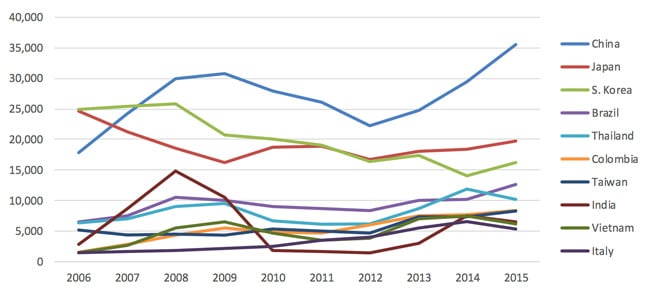Australia’s ELICOS enrolment grew in 2015 but source markets are shifting
Australia’s ELICOS sector (English Language Intensive Courses for Overseas Students) is bucking a global trend of slowing or shrinking enrolment in English Language Training programmes. New figures released this week by English Australia show that overall ELICOS enrolment in Australia grew by 4% in 2015 (compared to 2014) to reach a new record of 170,628 students for the year.

One in five from China
While source markets vary from programme to programme, the overall picture for the sector is that enrolment has become somewhat more concentrated within a group of key Asian sending markets. Not surprisingly, Asia is by far the dominant sending region for Australian ELICOS programmes. It accounted for 68% of all ELICOS students in 2015 (an increase of 2% over the year before).
On the strength of strong growth from Colombia and Brazil, the Americas surpassed Europe to become the second-leading source region in 2015, sending 14% of all ELICOS students last year compared to Europe’s 13%. The results, notes the report, "[build] on the constant growth of [the Americas] market over the last ten years. Europe dropped 3% points to 13% reflecting the weakening of this market after stable growth in the last five years."
But it was the "big three" national markets - all in Asia - that really drove growth again last year. China, Japan, and South Korea grew by 17%, 7%, and 16% respectively in 2015 and together accounted for 43% of all ELICOS enrolments over the year.
More broadly, the top ten sending countries accounted for 76% of all ELICOS enrolments in 2015, an increase of 2% from the year prior.

Most Recent
-
ICEF Podcast: Engine of growth: The true value and impact of the international education sector Read More
-
Global higher education enrolments expected to grow through 2035, but new challenges must be addressed Read More
-
Canada: A case study of immigration policy impacts on postsecondary institutions and the wider economy Read More
















